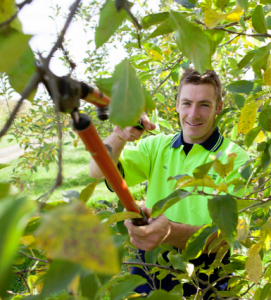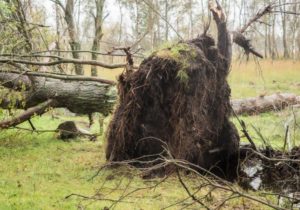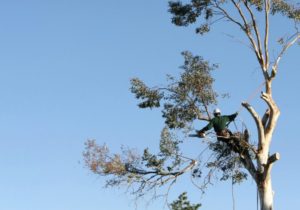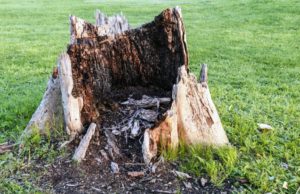How Do You Know If A Tree Is Diseased?
Could Your Tree Be Diseased?
Tree Diseases can cause a slew of problems that can lead to a number of dangerous outcomes. You could have a diseased tree right next to your house waiting for a storm to come through and knock it over. So, how can you figure out if a tree is diseased? This is a necessary question for property owners and landlords to consider, as diseased trees might invite termites, bothersome pests or damages to your home or investment properties. Damaged, diseased trees are also at risk of losing branches or outright toppling, which can mean costly damage to your home, office building or landscaping and injury to anyone nearby!
In this short article by Kleber C’s Danbury Tree Service, your Local Tree Service in Danbury we’ll explain exactly how to figure out if your Tree IS Diseased by looking at the Common Signs & Symptoms of an underlying tree disease.
To know if a tree is infected, infested, or just stressed, check these 6 common signs of poor tree health:
- Stunted appearance or leaf maturation
- Chewed or otherwise distorted leaves
- White spots
- Cottony white color masses
- Openings along the bark
- Stunted tree growth including twisting
Knowing if a tree is unhealthy and what all these indications suggest is the first step towards resolving these troubles and keeping your tree robust and sturdy. It’s also vital to know when a tree is beyond conserving so you can book tree removal services before it tips over or otherwise causes damage to your real estate.
A qualified professional arborist or tree services contractor can inspect a tree and note if it’s infected and can be restored. Note some added details about common signs that a tree is infected and how to address causes of disease and harm, and when it’s time to call in a specialist!

How Do You Know If a Tree Is Diseased?
A quick examination of your tree’s limb, branches, and leaves can often tell you if it’s diseased or otherwise needs some TLC. Take into account a bit more information about typical signs of tree ailments and then call an arborist or tree services contractor as required.
Eaten or otherwise altered leaves
Small holes and jagged or otherwise uneven leaf edges often indicate pests and resultant health issues. If you notice pockmarks along a leaf front of what appears to be jagged leaf edges, contact an arborist to check for infestation and needed treatment.
Stunted foliage or leaf maturation
Insects and ailments sap a tree of fluid and nutrients, which results in stunted foliage or leaf spread. You might notice bare limbs, dry leaves, or wilted leaves on a compromised tree. If so, don’t assume you should simply snip those branches but call an arborist as soon as possible, to address that infestation or other affliction.
Pearly spots on leaves and the tree itself
Scale insects are very small white-colored insects that drain a tree of its nutrients. These insects collect in masses that look like white spots on leaves and the tree itself. Rinsing off these insects helps protect the tree from further damage but that tree might also need some added maintenance to return to good health, including chemical treatment and better soil irrigation.
Cottony white masses
Wooly aphids are often mistaken for white mold on a tree. Like scale insects, you can wash off those aphids to preserve a tree but it’s also key that a tree care expert check the tree’s condition. He or she can note resultant damage and if the tree needs trimming or other care, and if the tree is fully free from an infestation.
Holes along the bark
Spaces throughout tree bark often show wood-boring insects including termites, or a lack of nutrients for the tree so that the bark cracks and breaks away. Those holes oftentimes give a nesting spot for bothersome insects who lay eggs or otherwise burrow into those spaces, making harm even worse over time. If you see pits in tree bark, call a tree service contractor as soon as possible!
Stunted tree progression including slanting
Nonnative trees might struggle to grow in an unwelcoming climate; a palm tree might struggle to grow in a colder climate, for example. However, tree illness, root deterioration, and other conditions will stunt tree growth so that it’s oftentimes smaller in size than anticipated.
Weak or unhealthy trees may possibly also begin to sag, as a damaged or weak tree is not robust enough to stand straight. Leaning trees are exceedingly dangerous as they might snap and then tip over, so call an arborist or tree care service for a full tree evaluation, treatment, and needed bracing.

Can a Diseased Tree Be Saved?
Similar to your own health, a diseased tree can often be saved depending upon its situation and how promptly you start treating it! Removing insect pest problems and correcting root rot, alongside added fertilizing and bracing as needed, can make it possible for a tree to grow healthy and sturdy once more.
Sometimes, however, disease or pests may have ravished a tree so severely that it’s beyond restoring. Severe bark damage and reduction or large-scale infestation may alter a tree’s overall condition so that it can not replenish that bark or produce new leaves.
Your real estate’s soil environments also affect how well a tree can rejuvenate; nutrient-rich soil feeds trees while stable ground allows it to stand tall and stay healthy. If your property’s soil is overly moist or sandy or requiring nutrients for any reason, a tree might struggle to grow even with treatment.
How Can You See If a Tree Has Root Rot?
Healthy and balanced roots are firm and generally whitish in color. Soft brownish roots, and particularly those that feel spongy to the touch, are almost always rotted. Root rot also increases the growth of fungi along the roots, so you could perhaps find spores and other types of growth.
Roots suck in moisture and nutrients from the soil; when roots rot, the tree subsequently likewise strains to develop and survive. Leaves routinely wilt and fall away, and new leaves might not come out throughout the tree’s sprouting time of year. In extreme cases, the tree might die within days or weeks of developing severe root rot!
Correcting root rot
Root rot is more often than not the consequence of far too wet soil. Properties with poor drainage will sometimes amass water around tree roots so that they then rot away.
It’s vital that you assess your property’s grade or slope, or supply needed drainage around the tree, before undertaking to address root rot. Soil should also be loose enough to permit suitable airflow and oxygenation, and for roots to spread out and grow through that soil.
Cutting away damaged roots and eliminating any fungi or other growths on the roots is also critical, so that healthy roots can grow. To ensure you don’t harm the tree or remove an excessive amount of root growth, call an arborist or tree care professional if you suspect a tree on your property deals with root rot.
What Does an Unhealthy Tree Look Like?
Illness and infestation are certainly not the only concerns for a tree on your property! A tree might be disease-free and not suffering an infestation, but still fighting to thrive. Bad dirt conditions, air pollution, constant damage to its trunk, and poor-quality trimming all influence a tree’s total condition and can lead to stunted tree growth. Signs of an unhealthy tree include:
- Bare spots throughout the trunk or branches
- Branches with no leaves or needles
- Fungus infestation along the trunk base
- Wilting
- Seeping sap
Healthy trees should show signs of flourishing; this includes growth along the trunk yearly, complete foliage or healthy needles, an upright stance, and solid bark that stands up to peeling. If you don’t see these indicators or see any of the signs of an unhealthy tree mentioned above, phone a tree care service or arborist close to you!
No Leaves, Does This Mean Death for the Tree?
Strong, vibrant leaves are a sign of a healthy, vibrant tree! No leaves, damaged leaves, or otherwise irregular leaves are commonly a sign of an unhealthy, damaged, or impaired tree. Trees also have an expected life expectancy; lack of healthy leaves can suggest that tree is merely perishing of the equivalent of old age.
If your tree’s leaves are thinning or unusual at all, call a tree service company or arborist. Your property might just need added hydration and watering for the tree to do well. Correcting ailments or infestations can likewise make it possible for a tree to grow healthy again.
An arborist or tree care company can even note the overall condition of a tree and if it’s dead or dying, or in danger of breaking limbs and falling. In those cases, it’s usually recommended to schedule tree removal services.

Saving Your Stressed Tree
A stressed tree is usually salvageable, with a little TLC! In the event that the tree is native or otherwise able to succeed in your local area, take note of a few simple tips for encouraging healthy tree growth and managing a stressed tree.
Mature trees frequently need about one inch of water weekly, either from rainfall or irrigation, in order to grow. Over a dry season or if your property’s soil is overly dry, consider an irrigation system to provide the tree with proper hydration. Mulch may likewise help keep the soil hydrated.
Professional trimming is also key for saving a stressed tree. Trees expend energy sustaining all their branches, including rotting or otherwise damaged limbs.
Pruning those limbs away, as well as reducing overgrowth so a tree obtains required sunlight and air circulation, ensures a tree grows healthy and strong.
While pruning is vital for tree well being, it’s just as significant that this work is done by a seasoned pro! Improper trimming solutions, including trimming limbs at the incorrect angle or trimming too many limbs, wounds trees and can do more harm than good. To assure healthy tree growth, call a tree service contractor for needed pruning and trimming.

Can a Dead Tree Be Saved?
If a part of a tree is decaying or outright dead, you may be able to trim away that part of the tree and then encourage healthy and balanced development. Reversing reasons for degeneration, including pest treatment to remove an infestation, may also help a stressed or drying tree to become healthy once more.
Nonetheless, if a tree is outright dead, there is commonly no chance to bring it back to life and good health. In that case, it’s most ideal to get the tree removed before it begins to split and shed limbs or fall outright.
Kleber C’s Danbury Tree Service is proud to offer this info to our readers and hope that you find it helpful! If you’re still pondering, how do you know if a tree is diseased, or if you need tree services in the Danbury, CT area, phone us. We offer full-service tree care and removal, and support all our work with a full guarantee you can trust!